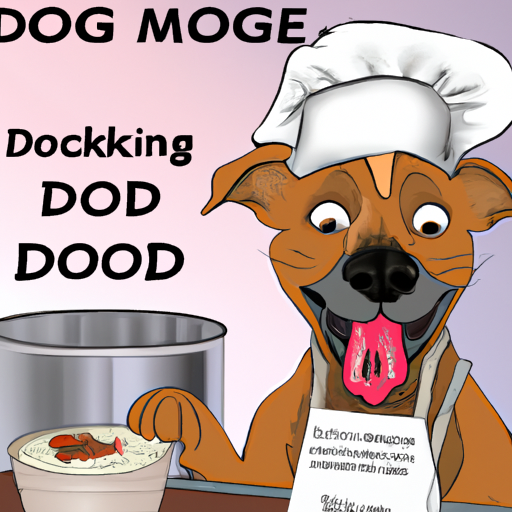Just like humans, our furry friends require not only love and care but also a balanced diet to maintain their health and vitality. The question is, what makes a balanced diet for dogs? Can we prepare their meals at home rather than relying on commercially available dog food? The answer is a resounding yes. Making food for dogs at home can be an exciting and satisfying task, especially when you know your efforts contribute to their overall well-being.
Table of Contents
- Understanding the Basics of Dog Nutrition
- Essential Ingredients for Homemade Dog Food
- Step-by-step Guide on Making Dog food
- Recipes for Homemade Dog Food
- The Pros and Cons of Homemade Dog Food
- Frequently Asked Questions
Key Takeaways
- Understanding your dog’s nutritional needs is crucial in preparing homemade meals.
- A balanced diet for dogs comprises proteins, carbohydrates, fats, vitamins, and minerals.
- Preparing dog food at home allows you to control the quality of ingredients used.
- Always consult your vet before switching your dog to a homemade diet.
Understanding the Basics of Dog Nutrition
Understanding your dog’s dietary needs is the first step in making their food at home. Dogs are carnivorous but have adapted to consume an omnivorous diet over time. This means they require a varied diet, balanced with both animal and plant-based foods.
Just like in humans, the nutritional needs of dogs change with age, breed, size, and health condition. Puppies and lactating mothers require more protein, while older dogs may need a diet low in fat and high in fiber.
If you’re considering switching your dog to a home-cooked diet, it’s advisable to consult your vet or a pet nutritionist. They can help you understand your dog’s specific dietary needs and guide you on getting started.
Essential Ingredients for Homemade Dog Food
Creating a balanced diet for your dog requires a mix of protein, carbohydrates, fats, and a variety of fruits and vegetables.
Proteins: They are the building blocks of your pet’s nutrition. Proteins provide amino acids, which are essential for cell regeneration, muscle development, and energy. Some excellent sources of protein include lean meats, fish, and eggs.
Carbohydrates: These provide energy, aid digestion, and promote gut health. Good sources of carbs for dogs include brown rice, quinoa, and sweet potatoes.
Fats: Fats are essential for keeping your dog’s skin and coat healthy. They also aid in brain development and cell function. Healthy fats can be found in fish, flaxseeds, and coconut oil.
Fruits and Vegetables: They provide vital vitamins, minerals, and fiber. Always ensure to research which fruits and vegetables are safe for your dog’s consumption.
If you’re unsure about the quantities of these ingredients, this Dog Food Nutrition Calculator can come in handy.
Step-by-step Guide on Making Dog Food
Preparing dog food at home can be as simple or complex as you want it to be. You can prepare meals in bulk to save time and effort. Here’s a basic guide on how to make dog food at home:
- Choose a protein source: lean meats like chicken, beef, or fish are a great choice.
- Pick a carbohydrate source: brown rice, sweet potatoes, or quinoa work well.
- Add fruits and vegetables: carrots, peas, and apples are safe for dogs.
- Cook the ingredients: steam, bake, or boil the ingredients until well cooked.
- Mix everything together: ensure a balanced mix of protein, carbs, and fruits/vegetables.
- Let it cool before serving: store the rest in an airtight container in the refrigerator.
For more comprehensive guides and recipes, you can visit this page on OneTopDog.
Recipes for Homemade Dog Food
There are countless recipes for homemade dog food available online. Here are a few to get you started:
-
Chicken and Vegetable Dog Food
Ingredients: Chicken breast, brown rice, carrots, peas, and a bit of olive oil.
Check out the full recipe here. -
Beef and Pumpkin Dog Food
Ingredients: Ground beef, pumpkin, peas, and quinoa.
Find the full recipe here. -
Fish and Sweet Potato Dog Food
Ingredients: Salmon, sweet potatoes, green beans, and a bit of flaxseed oil.
The complete recipe can be found here.
The Pros and Cons of Homemade Dog Food
Homemade dog food comes with its benefits and challenges. It’s vital to weigh these to make an informed decision.
Pros:
– You have control over the quality of ingredients used.
– It allows you to tailor your dog’s diet to their specific needs.
– It can be more palatable and enjoyable for your dog.
Cons:
– It can be time-consuming and requires planning.
– There’s a risk of nutritional imbalance if not properly formulated.
– It can be more expensive than commercial dog food.
Frequently Asked Questions
-
Can I feed my dog only homemade food?
Yes, but it’s crucial to ensure that the homemade diet is balanced and meets your dog’s nutritional needs. Consult your vet or a pet nutritionist for guidance. -
What common human foods are harmful to dogs?
Some human foods can be toxic to dogs, including chocolate, grapes, onions, garlic, and caffeine. Always research before feeding your dog any human food. -
How much homemade food should I feed my dog?
The amount depends on your dog’s age, size, breed, and activity level. As a general guide, dogs should be fed about 2-3% of their body weight daily.
In conclusion, making food for dogs at home is a labor of love that can bring immense health benefits to your furry friend. It allows you to control the quality of their diet and tailor it to their specific needs. However, it’s crucial to do it right to ensure a balanced and nutritious diet. Always consult your vet or a pet nutritionist before switching your dog to a homemade diet.



